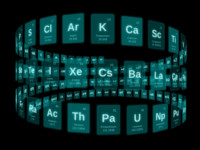Back in September, I was privileged to attend the first Oculus Connect event, the developer conference for the flagship VR headset, and get a hands-on demo of the new developer kit, code-named Crescent Bay. Crescent Bay is hands-down the most awesome thing I have ever experienced with a computer. But even as I was being transported into other realms, the earth-bound part of me was wondering where they kept the cooling room for the massive PC under the hood, and sniffing for the smell of burning wires. Combine that with the specs John Carmack and team are laying down as the baseline experience, and it seems to me that this device is headed straight for the living room. It’s not cheap, it’s not mobile, and it’s not something just anybody can build for. The Oculus Rift is destined to be the next console: the experiences will be created by high-end game and film studios, and delivered as paywalled apps via some future equivalent of the app store.
Perhaps anticipating a read guard maneuver by mobile phone makers, and maybe a bit spooked by Google’s introduction of CardboardVR, Oculus has also entered into a partnership with Samsung. The GearVR is a sleek mobile VR headset, and the demos I’ve seen are also stunning. But at a $800 cost of ownership, it’s also not a device for the masses. And Samsung, too, has already set the expectation that apps for the GearVR will go through its own app store.
You probably know where I’m going with this.
Last week, DODOcase and I took our mission of an open virtual reality Metaverse to the streets. Our DIYVR Kickstarter hit its funding target in just over 3 days and it’s headed for more. So far we’ve done it all with social media: our friends, their followers, and the people’s broadcast medium, Twitter. To me, the speed with which we hit the initial target says more about folks’ desires to keep VR open and affordable than it does about the size of our respective networks. VR, after all, is a movement of the people. This is how Oculus got funded in the first place.
DIYVR is about two things: affordable mobile VR, and the open software to build it. Twenty bucks gets you viewer hardware that works with your existing smart phone, and you can have that VR dance party, literally, out in the street, right now. And you don’t need a PHD in graphics or pro tools to build something. With software like GLAM and Three.js, all it takes is a text editor and mobile browser. Sure, Unity is awesome for creating mobile VR apps, but not everybody has the budget and time to master a pro tool, or pay a pro game development shop. Let’s say you’re the web team at the Museum of Science in your favorite city. I doubt you have a half million dollars to throw at creating a VR planetarium exhibit. Nope, you’ve got two people, two months and basically no money.
One piece of collateral damage of the current wave of VR development is that many startup shops who want to get into the VR game have to justify their existence with a business model, answering questions like “what’s the killer app?” from a pre-approved list of MBA filter questions – when all they really want to do is create great experiences, albeit perhaps for very small, niche audiences. But the resources required to learn pro tools, master the 3D skills, staff up, and market and sell through app stores is just too capital-intensive to support most of these endeavors. As a result, these teams either fall into the collapsed design space of zombie shooters and VR shopping, or they give up and go home.
What’s the “business model” for a VR fly-fishing site? A 3D generative art piece? A shrine to the goddess Isis? Who the fuck knows? More importantly, who the fuck cares? If making VR becomes as cheap, unfettered, and out of control as building web pages, then nobody will worry about this stuff. Or, as Automatic Jack famously observed: “…the street finds its own uses for things.”
This is the story the big players don’t want you to hear. Time to take it to the streets.
